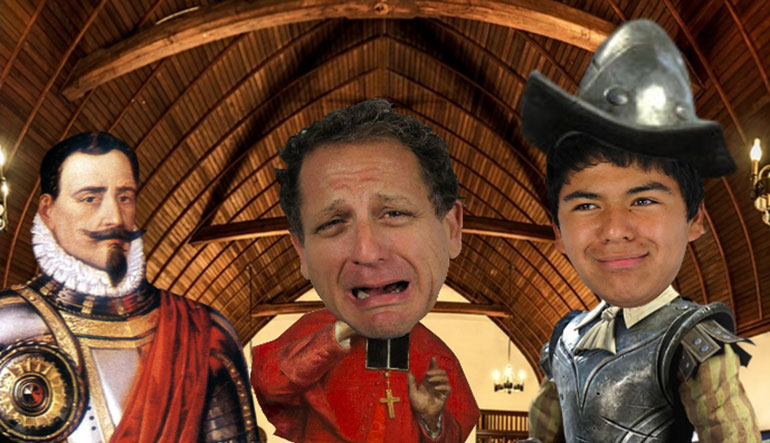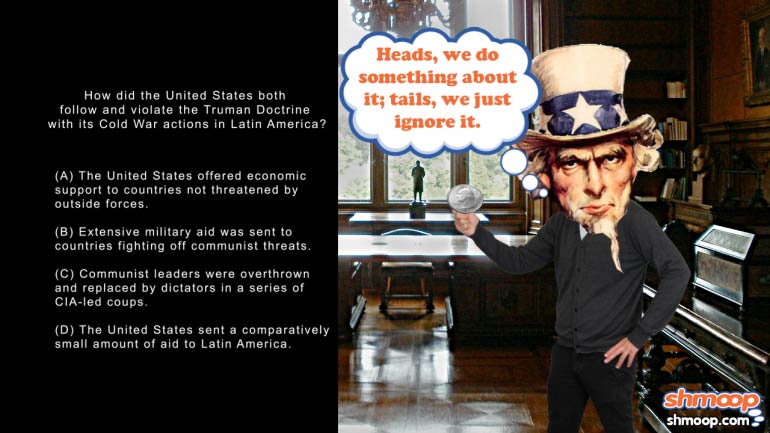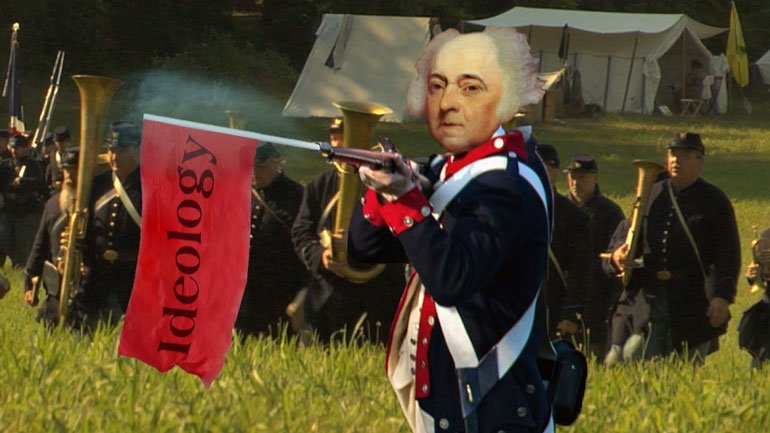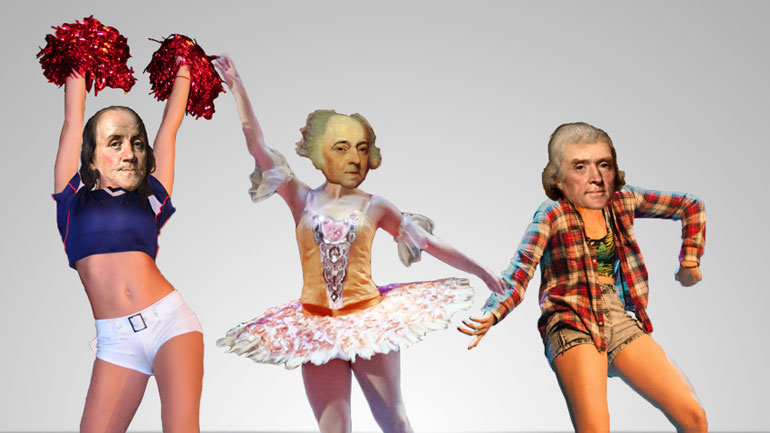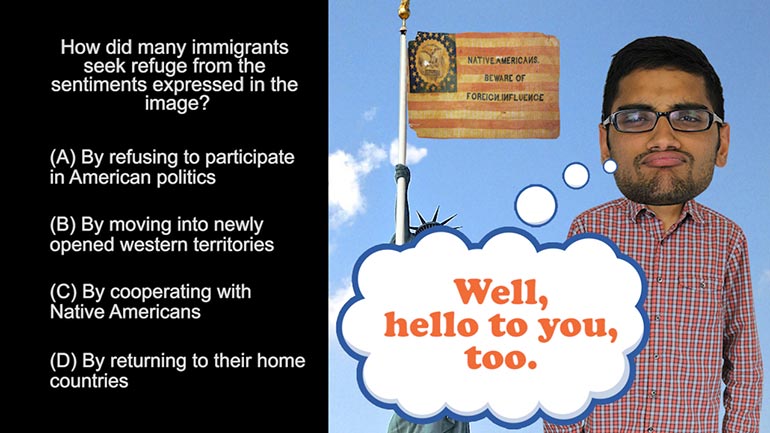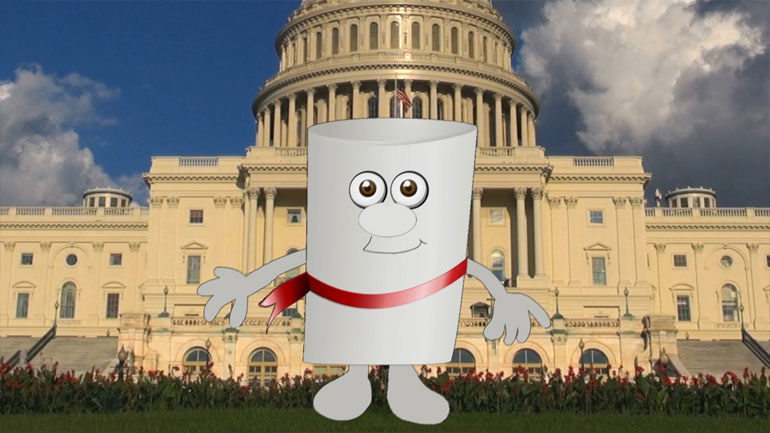ShmoopTube
Where Monty Python meets your 10th grade teacher.
Search Thousands of Shmoop Videos
Exam Videos 129 videos
AP U.S. History Exam 1.47. Which of the following was a legislative decision that secured the advancement of the civil rights addressed by the judi...
AP U.S. History Diagnostic 1. Relationships like the one shown in the image resulted in the development of...what?
AP U.S. History Diagnostic 15. How did groups like the ones represented by the image influence industry in America?
AP U.S. History Exam 1.52 171 Views
Share It!
Description:
AP U.S. History Exam 1.52. Why did the federal government continue to grow in the 1980s despite the philosophies expressed by Reagan in the excerpt?
Transcript
- 00:00
[ musical flourish ]
- 00:03
And here's your Shmoop du jour, brought to you by social security,
- 00:07
your safety blanket at a party.
- 00:10
Sort of. [a woman checking her phone at a party]
- 00:11
All right, give this excerpt a look.
Full Transcript
- 00:12
[ mumbles ]
- 00:15
[ mumbling continues ]
- 00:17
All right, and the question:
- 00:19
Why did the federal government continue to grow in the 1980s
- 00:21
despite the philosophies expressed by Reagan in the excerpt?
- 00:24
And here are your potential answers.
- 00:26
[ mumbles ]
- 00:28
[ mumbling continues ]
- 00:30
All right. Well, presidents can wish for [someone rubbing a genie-lamp]
- 00:32
as much change as they want, but sometimes
- 00:35
the public has hopes and dreams of its own.
- 00:37
Let's see which answer describes how Reagan's
- 00:39
best-laid plans were laid to rest.
- 00:42
All right. Did the federal government [image of a government office]
- 00:44
continue to grow in the 1980s because of A -
- 00:48
the growth of evangelical religions
- 00:50
and their role in politics?
- 00:52
Hmm.
- 00:53
Evangelical religions, as well as
- 00:55
the larger conservative movement [image of a cross shinning]
- 00:56
really praised Reagan's call for less government.
- 00:59
So that gets rid of A and B.
- 01:02
Did federal budgets expand
- 01:03
in the 1980s because of D - the need to rebuild
- 01:06
trust in the government after the scandals of the 1970s?
- 01:10
All right, well Nixon's whole Watergate fiasco
- 01:11
really dampened the public's faith in elected officials. [water falling over people in the parliament]
- 01:14
But that lack of trust led to calls for
- 01:16
turning off the government spigot, not increasing its volume.
- 01:20
So that drowns out D. Good-bye.
- 01:21
Which means the federal government continued
- 01:23
to grow in the 1980s because of C - [image of federal government office]
- 01:25
the popularity of long-existing programs.
- 01:28
Though many Americans agreed with Reagan's policies,
- 01:30
the popularity of the programs like Medicare and Medicaid
- 01:32
meant that government growth was all but written in the stars. [a woman selling shoes]
- 01:35
So C is the correct answer.
- 01:36
During the 1980s, the public's eyes were bigger than its stomach
- 01:40
for cuts to social welfare programs.
- 01:43
[ musical flourish ]
Related Videos
Ever heard of a "living document"? They eat and breathe just like the rest of us! They even walk around on their own two legs. Okay, fine—maybe t...
If the Puritans had gotten their way, religion would play a much larger role in lawmaking these days. Want to know more? Watch the video for all th...
What happened between the creation of the Articles of Confederation and the ratification of the current U.S. Constitution? This video analyzes the...
The Modernists thought the world had a lot of problems, and they were intent on fixing them—or at least talking about fixing them. Unfortunately,...
This video explains Federalism and the quest for a fair balance between state and national power. It covers the progression and compromises of Fede...











































